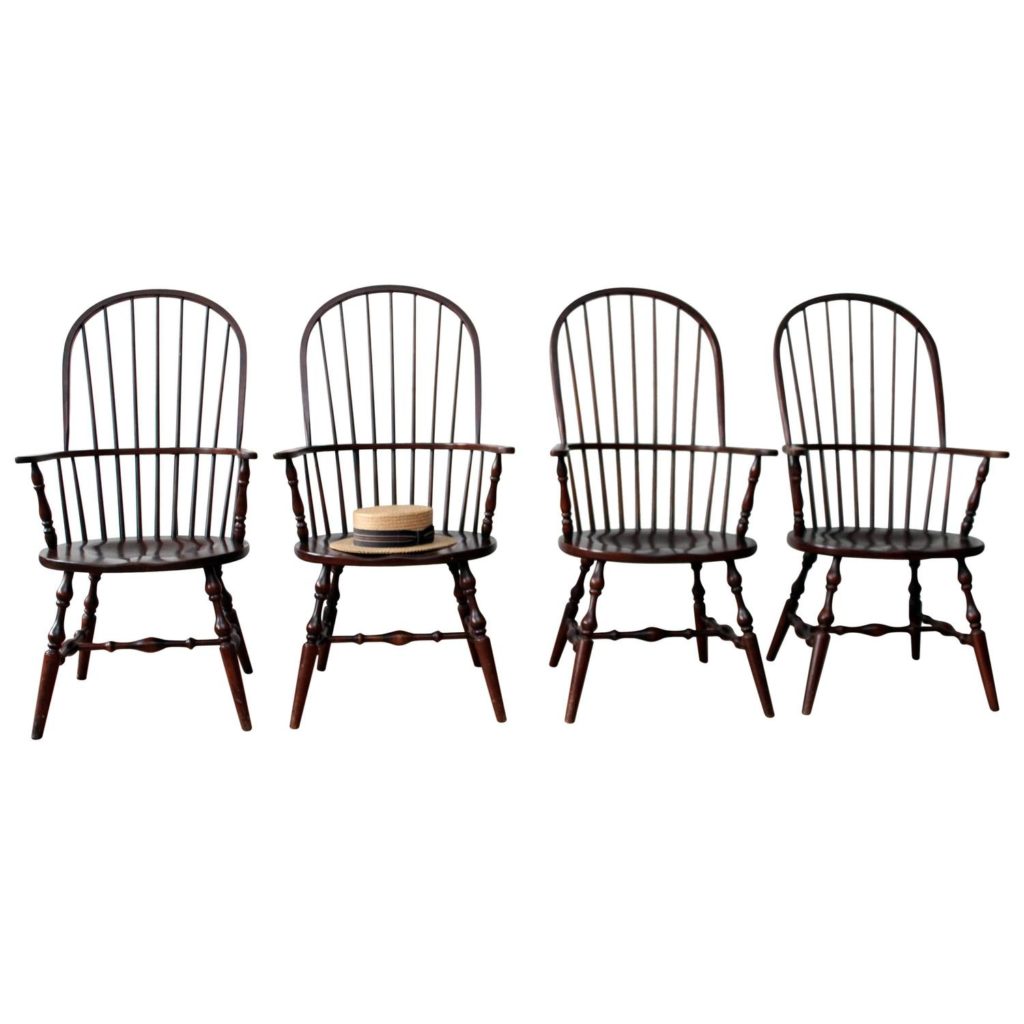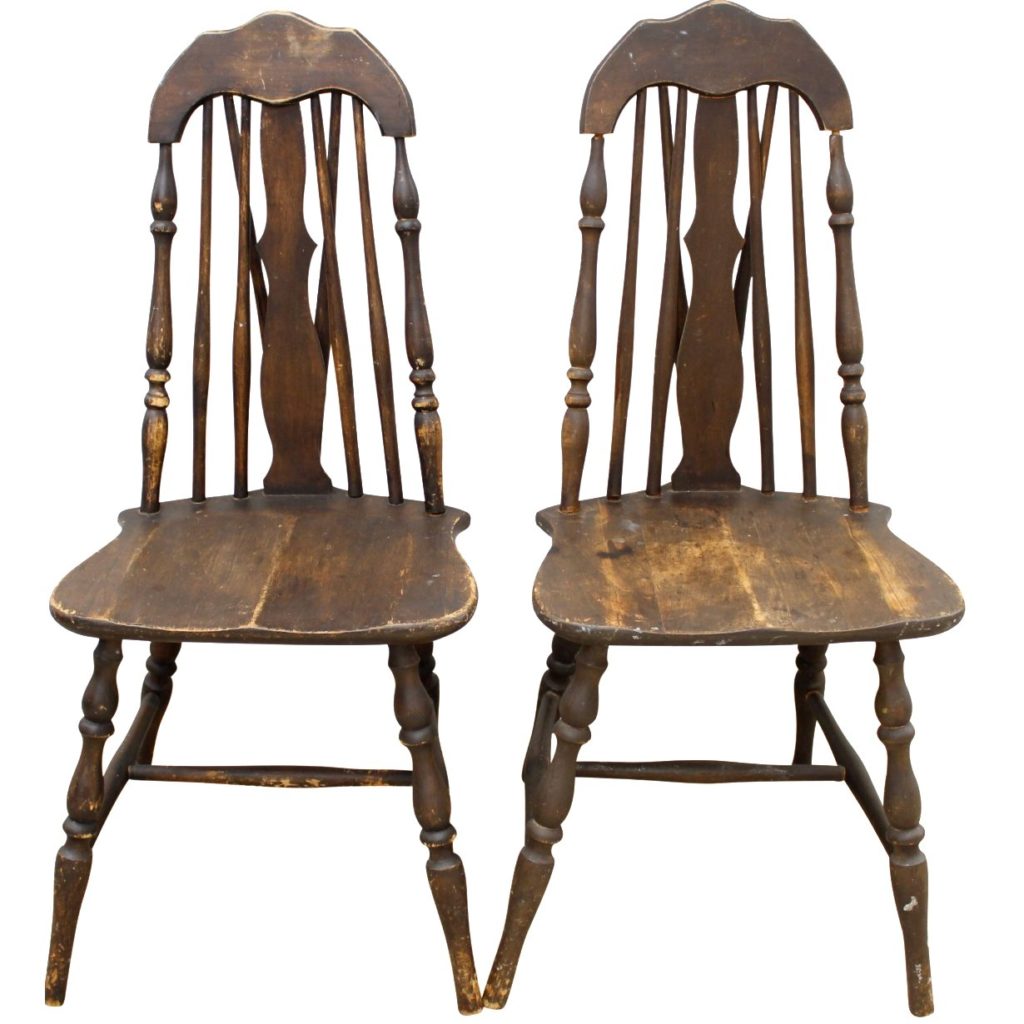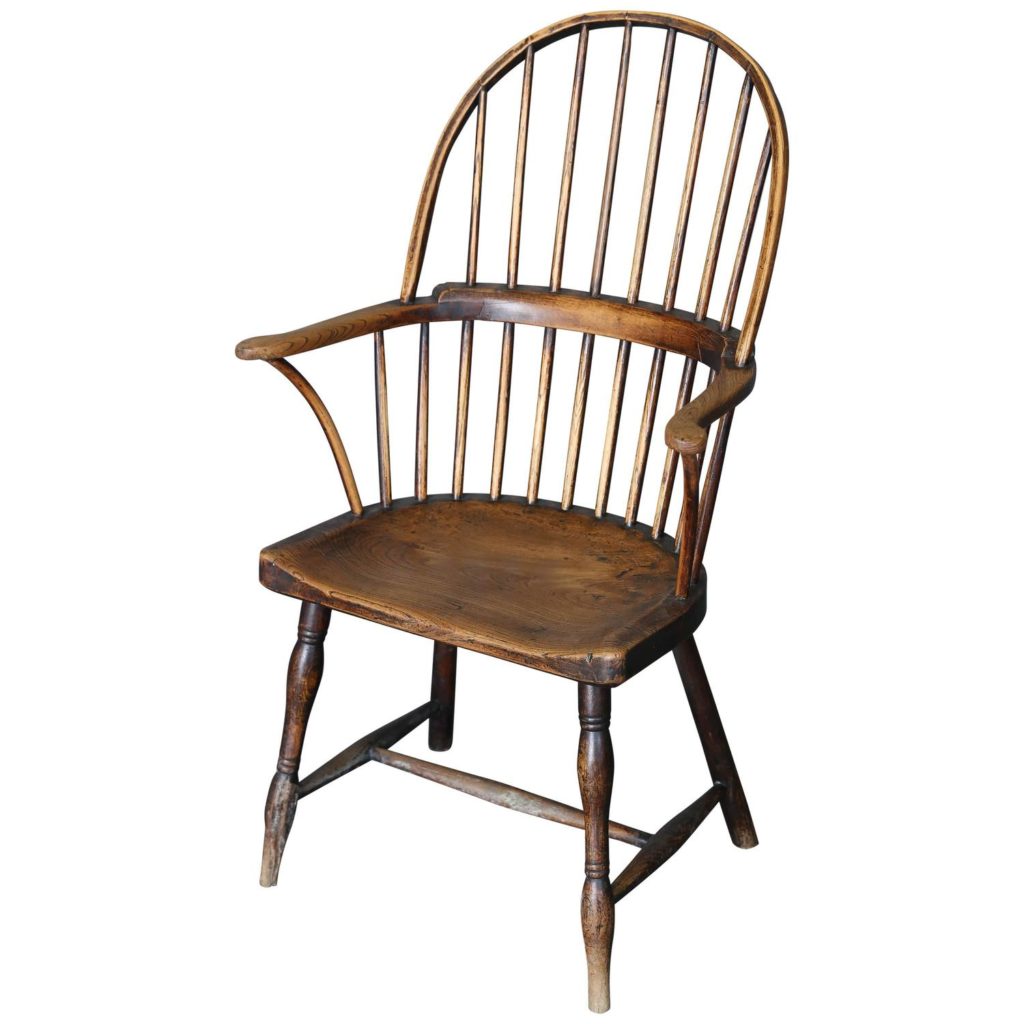Windsor Chairs: The Democratic Seat
By • January 25, 2019 0 5284

Wherever the first Windsor chair came from, in the 18th-century American colonies it became known as the “democratic chair” of the independent American nation. The legend about its beginnings has it that King George II, seeking shelter from a storm, arrived at a peasant cottage and was given a multi-spindled chair to sit on. Its comfort and simplicity impressed him so much that he had his own furniture maker copy it for Windsor Castle.
Early English Windsors were used principally outdoors, on the grounds of country estates. When introduced to the colonies in the mid-1720s, blue-green was the predominant paint color for these chairs, since it was thought to camouflage the furniture in the landscape.
Although it was designed in England, the Windsor chair was perfected through Yankee ingenuity. Since timber was plentiful in the colonies and bulky furniture would have been expensive to ship, furniture making became an essential trade. It was likely a Philadelphia maker who made the first American Windsor.

A pair antique splat tapered back windsor chairs
Colonial craftsmen eliminated a central splat featured in the original chair’s back and the front legs were socketed farther from the seat edge. They also designed thinner splats, legs and bent parts. These alterations simultaneously strengthened the chair while giving it a light, airy appearance.
The American model was primarily an indoor chair, made of a combination of cheaper woods: hickory for the spindles, pine for the seat and maple, ash or oak for other components. To disguise the mix of timber, the chairs were painted; green, brown and black were the colors of choice.
The popularity of Windsor chairs was derived partly from their association with the Founding Fathers — Jefferson, Washington, Adams and Franklin all owned them — and partly because the chairs were easy to manufacture.
Windsors are considered to be the first mass-produced furniture design in the United States. Beginning around the turn of the 19th century, furniture makers began turning out separate components: spindles, legs, etc. Because the parts were interchangeable, they could easily be sold and shipped around the country for assembly by local craftsmen.
Furniture historians cite 1725 to 1860 as the golden age of the Windsor chair, with various styles readily available. The low-back chair is the least common of the early 18th-century Windsors. In addition to general use, it served as a desk chair because the rail was low enough for the seat to be drawn under a desk. High-back Windsors, introduced around the same time, featured a lightweight bent arm rail, adequate because the sitter’s weight was distributed along the entire length of the tall back.
Later, during the early 1760s, Philadelphia chairmakers introduced a sack-back Windsor, which enclosed the spindle tops within a bent bow above the arm rail. In the 1770s, Philadelphia artisans crafted the first fan- back Windsor. The fan-back chair flourished in the postwar economy in response to rising demand by the middle class for affordable yet stylish seating. Smaller than its predecessors with arms, the fan-back chair was usually purchased in sets of six, becoming a popular seat for dining.

18th Century Connecticut Knuckle Arm.
Regarded today as a classic in Windsor design, the continuous-bow chair was developed in New York City around 1790. This was the only 18th-century Windsor pattern based on a non-English prototype and the only one introduced to the American market prior to 1810 in a place other than Philadelphia. The pattern was never produced in Pennsylvania, where the bow-back armchair was the pattern of choice.

Antique 18th Century Ash and Elm Windsor Chair.
The versatile Windsor chair — which replaced slat-back and banister-back chairs as the premier vernacular seat in the American home — continues to be produced today by fine furniture makers, as it has been for more than 300 years. It is also widely mass- produced. A collector who wants to determine the age of an antique Windsor chair should begin by doing some homework.
Checking the chair’s construction will give some clues, starting with the chair’s composition. Since early chairs were constructed from mixed types of wood, look for hickory, pine and birch. Mahogany can date a chair to the 19th century, since it was difficult to obtain before then.
Early Windsors will have turned sticks driven through the plank seat to form leads; they have no stretchers or nails. Also, the legs of an early American Windsor will be angled, as opposed to the straight English legs. Older chairs have thicker seats and more spindles.
Windsor chairs remain a staple in country furniture and enjoy regular bouts of renewed interest. Today, authenticated 18th- and early 19th-century Windsor chairs can fetch prices in the four figures. Those in mint condition, with their original paint, can easily bring five figures.
Michelle Galler is a realtor and an antiques dealer in both Washington, D.C., and Washington, Virginia.

